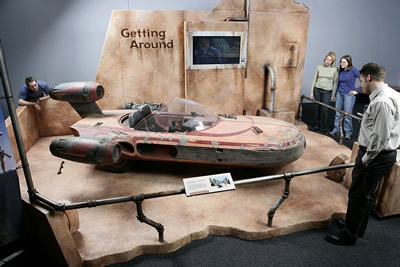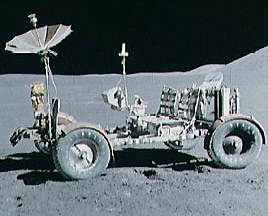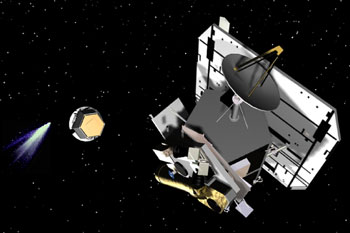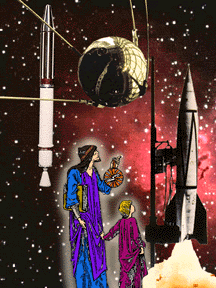Click on image for full size
An Overview of Space Exploration
For as long as there have been people on Earth, we have looked up at the sky and wondered about the Sun, Moon, stars, and occasional dramatic events we saw there. But it is only in the past 40 years that we developed the technical ability to leave our planet and actually visit other bodies in the universe.
After World War II, both the United States and the Soviet Union created programs to impove the design of rockets which would make space travel possible. What then followed was a race to travel into space with unmanned probes and manned spacecraft.
During the last four decades, hundreds of satellites, probes and space shuttles have been launched, which have explored near-Earth space, travelled to the Moon, the Sun, and to all the planets except Pluto. And, with permanent space stations already in orbit around Earth and telescopes exploring more and more of our universe, space research is still continuing. Talk of future developments includes building a colony on Mars, searching for life in other galaxies, and other exciting programs.
You might also be interested in:

A new museum exhibit shows that some of the robots, vehicles and devices from the Star Wars films are close to the types of things scientists have developed to use in space. The exhibition--at the Science
...more
The Hubble Space Telescope (HST) was one of the most important exploration tools of the past two decades, and will continue to serve as a great resource well into the new millennium. The HST found numerous
...more
Driven by a recent surge in space research, the Apollo program hoped to add to the accomplishments of the Lunar Orbiter and Surveyor missions of the late 1960's. Apollo 11 was the name of the first mission
...more
Apollo 12 was launched on Nov. 14, 1969, surviving a lightning strike which temporarily shut down many systems, and arrived at the Moon three days later. Astronauts Charles Conrad and Alan Bean descended
...more
Apollo 15 marked the start of a new series of missions from the Apollo space program, each capable of exploring more lunar terrain than ever before. Launched on July 26, 1971, Apollo 15 reached the Moon
...more
NASA chose Deep Impact to be part of a special series called the Discovery Program on July 7, 1999. The Discovery program specializes in low-cost, scientific projects. In May 2001, Deep Impact was given
...more
The Galileo spacecraft was launched on October 19, 1989. Galileo had two parts: an orbiter and a descent probe that parachuted into Jupiter's atmosphere. Galileo's main mission was to explore Jupiter and
...more















